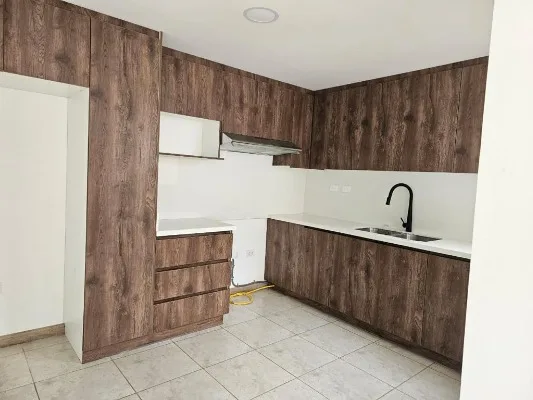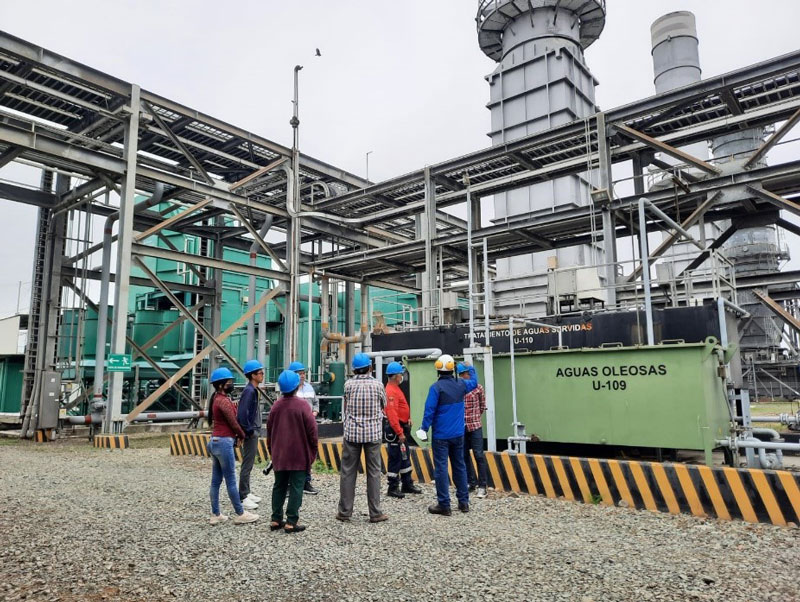Understanding the IESS and public health care systems in Ecuador — and their limitations
By Garnett Stewart
Many of you know I live with Ecuadorian medical students. I have some critical insider news.
 In the U.S. all medical students are college graduates. Many have master’s and PhDs before admission. The MCAT, the medical college admissions test, is a difficult exam, and the results, résumé, list of courses completed and scores, personal essay, and multiple recommendations, are the minimum requirements for medical school admission. Student community involvement is valued, and many students recall their philanthropic efforts. Rivalry was more intense more than 40 years ago.
In the U.S. all medical students are college graduates. Many have master’s and PhDs before admission. The MCAT, the medical college admissions test, is a difficult exam, and the results, résumé, list of courses completed and scores, personal essay, and multiple recommendations, are the minimum requirements for medical school admission. Student community involvement is valued, and many students recall their philanthropic efforts. Rivalry was more intense more than 40 years ago.
Since I was tested and accepted, I can say that this is a lengthy process. I got into five medical schools, but then something terrible happened. Both parents had metastatic cancer and needed my help. Even though I supported him during many military tours, my ex-husband refused to help me with medical school. I ran our businesses and household. He feared he couldn’t meet his requirements if I studied out of town. He was not willing to move. We divorced while I was caring for my three businesses and my dying parents.
I would have studied medicine if my parents hadn’t needed me. However, I adored and helped my wonderful parents in their final years. No regrets except that I couldn’t muster the will to reapply to med school after they died only months apart. After almost a four-year hiatus, I just did not have the drive to relearn physics, chemistry, and calculus. I was spent.

The IESS José Carrasco Arteaga Hospital in Cuenca.
Ecuador: Ecuadorian colegio graduates (high school) can apply to and be admitted into medical school at 17 or 18. I am certain they have always lived with their caring parents. No central exam is required, just a qualification period. Many legacy students are exempted from this 5-month process. Legacy pupils often lack any qualification.
My medical students are immature, and their parents will not accept that maturing them is the first priority. I observe that “Mamacita” is very dominant and this coddling makes them much less self-reliant. Additionally, no one in Ecuador is taught critical thinking skills. In the states, I started my critical thinking skills at about three years of age.
I completed all models, read medical texts and studied in the real world before attending nursing school. In this digital age, medical students develop 3D models to learn anatomy. I am always seeing art projects. Really, art projects? In medical school, art projects are standard.
The study is divided into ten cycles, roughly similar to long U.S. semesters. My Catholic University (Basilica) students pay $3,000 per cycle, up from $1500 two years ago. No grandfather provisions mean that if the university seeks more money, all students are affected. Scholarships were exhausted. Families and students must pay or take a leave due to money shortages. Student handbooks in the U.S. outline university life each year. Good-standing students are unaffected by later changes. The system here will change in decades if I live long enough to show the value in another process.
As a patient, I’ve received both excellent and horrible advice. Since most of you don’t speak medical English, expecting competent treatment in another language without help is absurd. This is MY warning is for your safety.
In the Ecuadorian IESS (Social Security) healthcare system, acute care is available, however routine care is unavailable. Foreign residents cannot visit the Ministry of Public Health (MSP) facilities. If you arrive at the Vicente Corral Moscoso
Hospital unconscious, they might treat and transfer you immediately. This makes the free MSP hospital dangerous for expats! That being said, the care is quite good there.
I bought a Humana first-dollar health insurance policy like many foreigners when IESS began to fail. I’ve received excellent care in the Humana network. No doctors in that system are new or unqualified. I can share the plan with you if you me.
Not true at IESS: If your doctor attends to you, remember to get a second opinion if the care seems suspect. For serious consideration, note the following graduation years:
- 2020
- 2021
- 2022
- 2023
- 2024
Why? Covid ceased clinical studies and hospital rotations during school for two years. These new doctors are unprepared and scary. My interns, who will be unsupervised in four months, have few skills and a poor work ethic. They are not your adequate doctors. They do not pass my standards and the most amazing thing is I tried to help them. I was not successful.
Why? No one in Ecuador learns from corpses. There are no cadaver studies!
They usually meet patients for the first time when they touch them in clinicals. They lack U,S.-style skill labs. My pupils practice drawing blood from conscious persons first. Not with a dummy or unconscious patient. Without a complicated anatomy model. Not with corpses!
This skill is taught at the expense of the IESS patients. MSP patients also receive training in this skill set. MSP interns spend two months and in hospitals for 10 months, mostly at the José Carrasco Arteaga (IESS) or Vicente Corral Moscoso Hospitals in Cuenca.
During their internship, they will receive $350 monthly net pay. Because buses cannot get to the hospital at 5 a.m., transportation costs have soared. They must pay for hospital food and an obligatory $40 is deducted from their salaries for it. Due to their busy schedules, people often skip meals and eat food that is unhealthy. They lose bodyweight. Hair falls out! Many stresses and other related problems are obvious.
Readers: I did cadaveric studies for my Family Nurse Practitioner degree. The N.P. options were significantly fewer decades ago. We started with coma patients when we did our first clinicals.
Not here, not in Ecuador
If your doctor is young, find out where and when they graduated. One of my IESS doctors prescribed blood pressure medication without first examining my blood pressure. I asked three times. No BP checks! Rather than practicing medicine, the doctor was documenting on her laptop. Just one IESS doctor has actually touched me in five years. I save my own life all the time.
If possible, acquire a second opinion after their care. The $40 private pay is worth far more than you anticipated before I wrote this article. At their private offices, all IESS doctors can practice better medicine. They can prescribe painkillers not available at IESS in private. They can prescribe muscle relaxants. They can inform you better. Many other information details can be provided in their private offices but they will say I cannot at IESS and that is because if they do the request, they can be fired.
Accounting and legal professionals run IESS, with one doctor on the board of directors. That one doctor must rule over many others, and I’ve seen IESS protocols aren’t truly not medically motivated. I have directly witnessed this.
I remain an IESS patient for several reasons:
- To transfer to IESS if my Humana $10,000 per incident coverage runs out.
- IESS saves me money on non-urgent tests and x-rays. I get some (few) medicines there.
- Both plans offer burial benefits.
- At ten years, payments are canceled and I become “vested” in the health care system.
- Voluntary IESS subscribers (which include most expats) get pensions.
I’ll stay at IESS and use Humana for my daily requirements!
Many reputable senior general medicine practitioners charge $15-20 per visit, but you must bring an interpreter or facilitator. I speak medical Spanish well, with few exceptions. I don’t hire facilitators. You should use a medically trained facilitator.
Please don’t ask me to be your facilitator. Given this, many private English-speaking doctors are available.
How to find them?
- Internet connectivity is accessible.
- At your favorite hospital’s concierge desk.
- Visit doctorpro.com
- Check yellowpages.ec
- Check hospital directories and write to WhatsApp choices.
- Contact private labs for advice. They can help since they also interact with providers
- Contact physical therapy providers.
Other lessons:
- Please plan beforehand and have doctors’ numbers in case of emergency.
- Meet with the provider prior to guarantee comfort.
- Our list of English-speaking Hospital del Rio clinicians for Blue Box Asesores is always expanding as I meet colleagues personally.
Be careful out there. Plan ahead and get second opinions.
I send many blessings for 2024.
____________________
 Permanent resident Garnett Stewart lives in Cuenca, Ecuador. She is a retired Adult Medicine Nurse Practitioner who specialized in Cardiology and Cardiovascular Surgery and wrote numerous publications. Her nursing degrees are both Bachelors and Masters. Biochemistry and biophysics were her undergraduate majors and a Nursing Bachelors was required before the Masters. Contact Ecuador.advice@gmail.com please and not privately. I am keeping statistics of responses and data.
Permanent resident Garnett Stewart lives in Cuenca, Ecuador. She is a retired Adult Medicine Nurse Practitioner who specialized in Cardiology and Cardiovascular Surgery and wrote numerous publications. Her nursing degrees are both Bachelors and Masters. Biochemistry and biophysics were her undergraduate majors and a Nursing Bachelors was required before the Masters. Contact Ecuador.advice@gmail.com please and not privately. I am keeping statistics of responses and data.



















